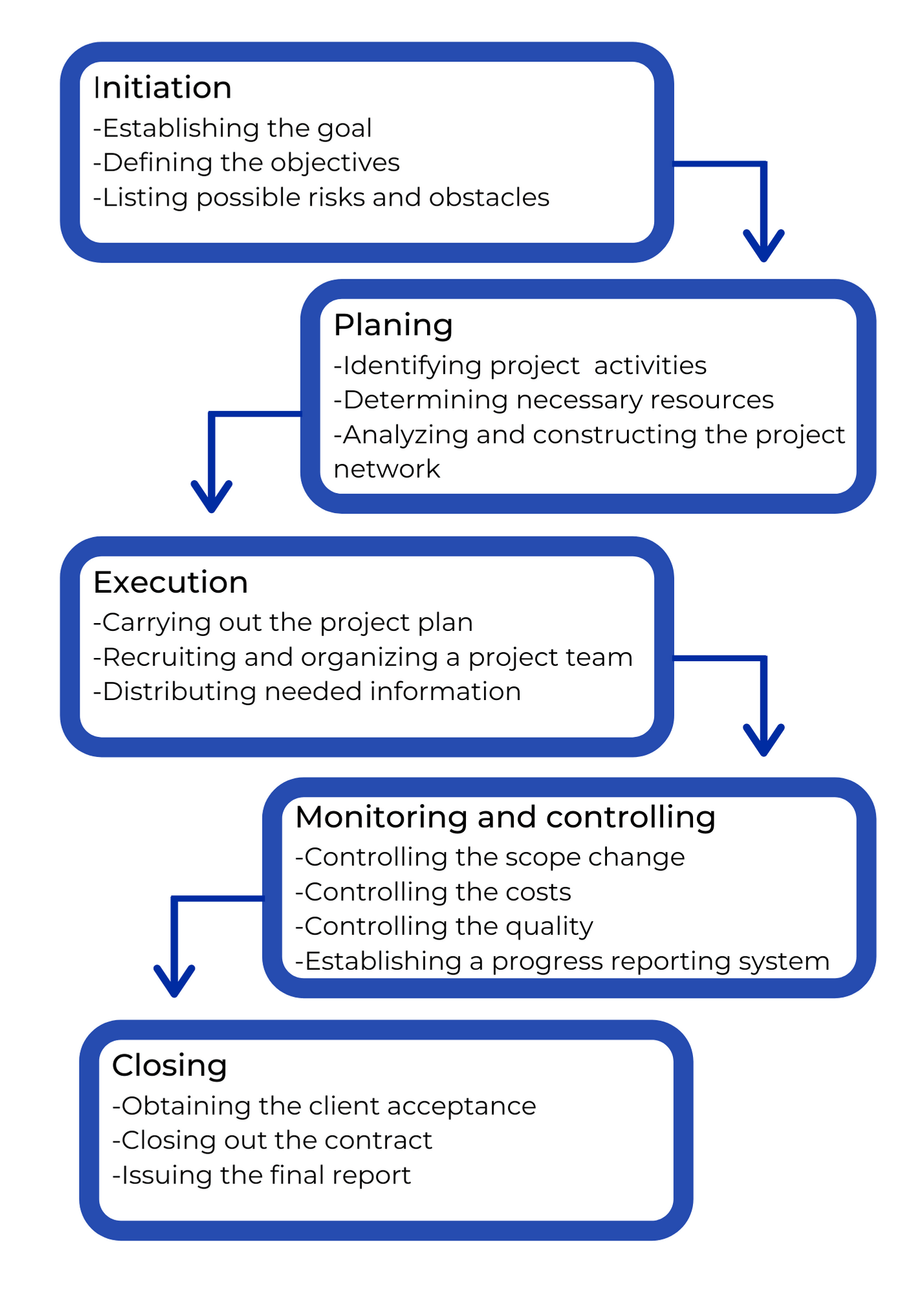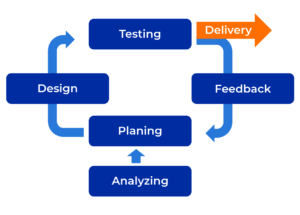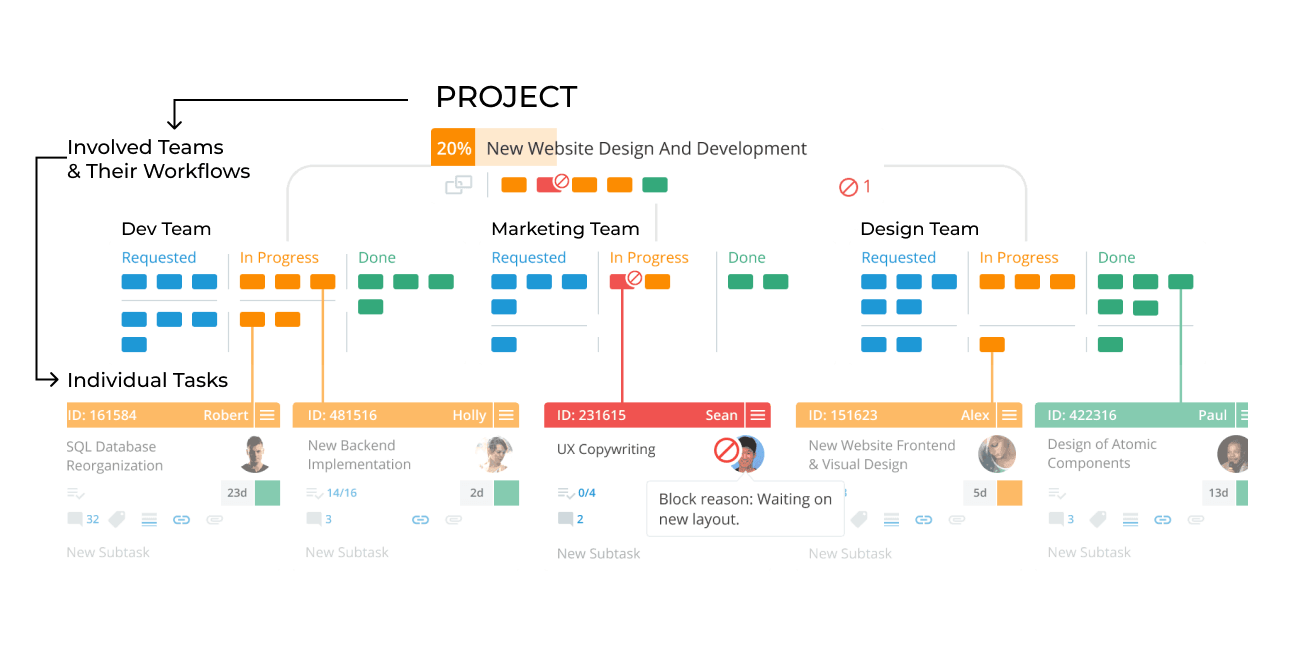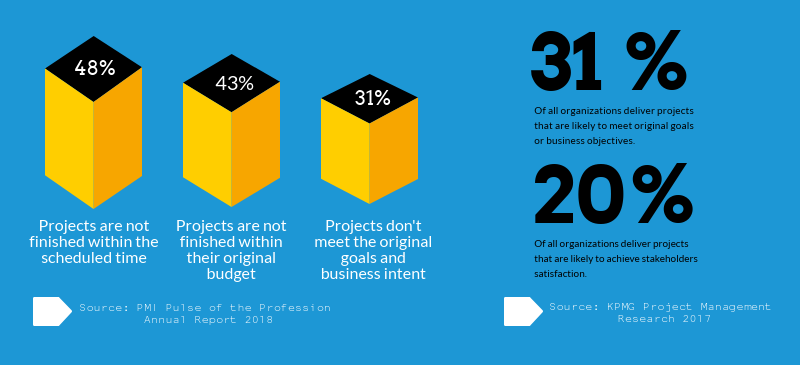Project management is a booming industry that is painfully imperfect. Although we have seen some improvement in recent years, many project management issues remain unresolved, causing significant financial negatives.
When asked to name their biggest struggles, project managers point to the disconnect between planning and execution and miscommunication as leading causes of their problems. Further on, they add challenges in the risk and expectations management fields as obstacles to realizing projects that are likely to achieve stakeholder satisfaction.
Data representing the current state of traditional project management.
In trying to deliver solutions for these issues, many attempts are made to fix one of the named areas. Looking at the core DNA of traditional project management reveals, however, the need for an evolutionary, more adaptive, and customer-oriented approach toward managing projects.
Traditional Project Management - The WaterFail
Searching for solutions on a more systematic level, let's not jump to suggestions straight-ahead. First, let's ask ourselves, what is disconnecting planning and execution in traditional project management?

A simple look at the Waterfall diagram, one of the most common methods in the field, highlights this issue straight ahead. Planning and execution are two separate stages, or cascades, that do not overlap. It becomes clear that the missing link is embedded in the design of the method.
The planning stage is about creating the plan, and the execution stage is about following it. Changing customer needs, value delivery, and quality often suffer or are just left behind to execute the plan, to stay in the scope or in the budget.
The Waterfall approach has limited flexibility and low customer orientation. As I think this is more than obvious, I will not spend more time persuading you where the common project management issues come from.
Let's now move forward to suggesting system improvements that will not fight them directly but eliminate the chances of those issues' existence.
Connecting Planning and Execution through Faster Feedback
How to connect planning and execution?The short answer is with more customer involvement through faster and more frequent feedback.
Introducing feedback loops, early into the process and frequently throughout it allows for planning and execution to overlap. It also ensures both are directed by the needs of the customer, even if they shift during the execution phase. Once you have feedback on the preliminary results, it is easier and cheaper to integrate this feedback and adjust if needed. This way, not the plan, but the customer becomes king.
However, this may sound easier than it is. Collecting feedback early in the delivery process also means delivering in smaller batches and not just at the end of the project - a shift in the overall process execution. The benefit is, this approach, also known as Agile, has already been proven successful in the software development world. So there is no need to guess or assume if it is worth adapting it.
Agile and its guiding principles and values emerged in the 90s after the famous "application delivery lag" crises, shifting the focus from processes and tools to individuals and interactions, from contract negotiation to customer collaboration, and from following the plan to responding to change.
The results followed - higher project success rates, better quality of end products, and improved speed to market. This led to a wave of excitement and rapid development of different practices based on Agile principles and values.
Currently, there are over 70 variations, all of them characterized by structuring tasks into short phases of work and frequent evaluation and adaption of plans.
Adjusting your project management process to be able to receive and integrate faster feedback makes it more adaptive to change and customer-oriented. You can focus on connecting planning and execution, by combining Agile and OKRs, for instance, and as a consequence, you also reduce the risk of surprises and the amount of potential rework or false expectations up until the end. The result is a redesigned process that eliminates major project management issues from the outset.
Increased Predictability Through Evolved Risk Management
To continue on the same notion, reducing the risk of "surprises" or non-value-adding activities as rework has, then again, benefits of its own, like increased predictability.
Unrealistic estimation and the lack of predictability are other common project management issues, rooted in the design of traditional PM. It is hard to be realistic about your estimations when you can only base them on your gut-feeling. It becomes even harder, combined with the high amounts of risk and uncertainty up until the late phases of the project when you deliver.
To improve your predictability, we suggest focusing on improving your workflow and ensuring it is stable. Here again, it is about creating a system that supports the success of your projects.
Flow management and continuous improvement are central pillars of Lean Management. The focus is on eliminating bumps from the road and waste (non-value adding activities) from your workflow.
In its sense, the idea of flow optimization is that nobody is waiting, nobody is blocked, work is smoothly flowing through the system and adding value to the end result. To achieve this state of non-interrupted delivery, you can cluster tasks per type and calculate the average time needed for execution. This allows you to make data-based predictions and answer the customers' favorite question, "When is it going to be done?"
By clearing the path to predictable services, you are practicing evolved risk management. You create the conditions that minimize risk and increase predictability, making risk management not a task, but an integral part of your project management system.
Here I will quote our CEO:

Tackling Miscommunication with Transparency
From the project management issues we discuss today, miscommunication tends to sound almost trivial. However, even early and frequent feedback will not be helpful if it is not communicated correctly, effectively, and to the right people.
But how do you manage to communicate everything with everybody at the right moment with the correct details? Again, the focus will not be on how to fight this exact problem but on how to create a system that eliminates the risk of miscommunication in the first place.
Miscommunication is often caused by delayed, outdated, or missing information or assumptions. To sum it up, we can say it is the lack of an up-to-date overview, which often happens to be the result of low transparency.
Team members do not know who is doing what, dependencies stay under the radar, and the latest customer input is somewhere in the inbox.
From our personal experience, the most effective way to tackle this is by visualizing your project. Humans are visual creatures. Visual information can be processed 60,000 times faster than text, and it is easier to remember. Create a one-stop visual information point for your project, where all involved parties can proactively inform themselves and visually give information on the status of their tasks.
Our preferred method for project visualization is a Kanban board. The goal is to have all tasks, their stage, the necessary information, and track dependencies in one place. Aim to make everything transparent and easily accessible.

Eventually, your Kanban board transforms into a real-time status reporter on what exactly is going on into the project, and task management becomes a lot smoother. Being able to get the information they need, to signal workflow interruptions, and to access all relevant documentation, team members become more aligned and productive.
Combining a digital Kanban board for your in-house information exchange with a clear communication strategy for the other stakeholders, you create a system highly resistant to miscommunication.
At the End of the Day...
A lot of the widespread project management issues are the result of poorly designed project management systems, lacking adaptivity, transparency, predictability, and visualization.
After almost 30 years of resistance, maybe it is time for traditional project management to re-evaluate its methods and adopt the meanwhile not very new Agile, Lean, and Kanban best practices for managing projects.
Instead of constantly fighting issues, focus on creating a system that eliminates them. This way, you can enjoy sustainable improvements, and rechannel the energy you used for fighting into energy you invest in improvements. The best part is that, as we saw, one system improvement tends to have cascade-like benefits to numerous aspects of your project management operations.

Michaela Toneva
SEO & Content Creator | Agile Practitioner
With a never-ending thirst for knowledge and a passion for continuous improvement, Michaela is an Agile practitioner with a good understanding of Kanban, Lean, and Agile methodologies. Her professional background includes SEO and content writing with a dose of sales and a pinch of social media.




